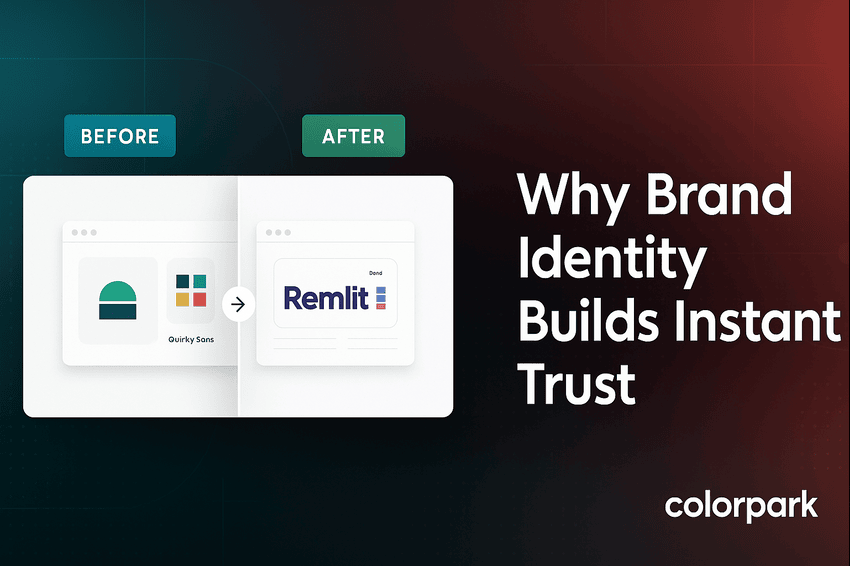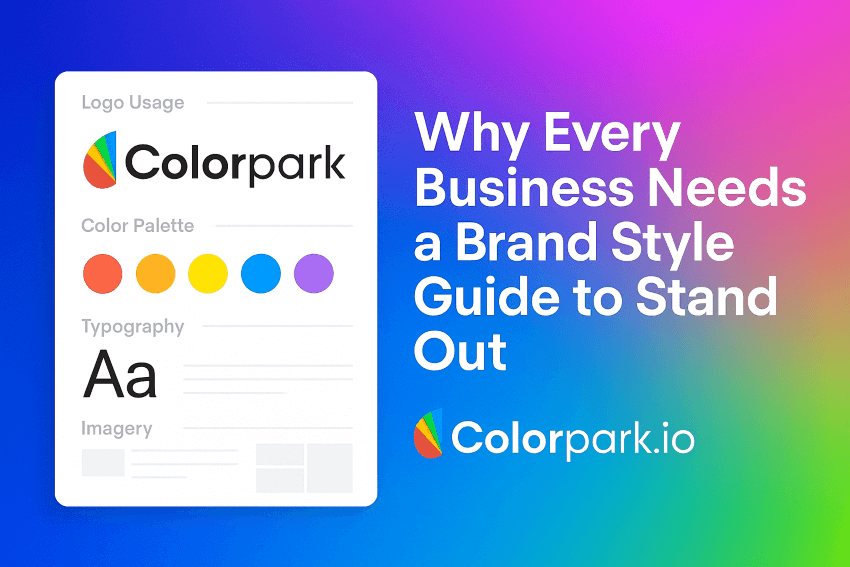Introduction
Picture this: You’re about to sign a contract with a new company. You visit their website, glance at their logo, scroll through their social media posts—something feels… off. The visuals look outdated, the design inconsistent, and the overall impression doesn’t inspire confidence. Do you trust them with your money, time, or business? Probably not.
Now flip the scenario. You land on a website with clean, consistent branding, professional visuals, and a design that reflects ambition and credibility. Within seconds, you feel confident this business knows what it’s doing. That’s the power of brand identity—design that builds instant trust.
In this guide, we’ll walk you through why upgrading your brand identity is no longer optional, how smart design directly influences customer decisions, and the exact steps you can take to build a brand that commands authority, attracts loyal customers, and accelerates growth.
Why Brand Identity Matters More Than Ever
Your brand identity is the visual and emotional fingerprint of your business. It’s not just your logo or your color palette—it’s how people perceive you before they’ve even read a word of your pitch. In a digital-first world, design often speaks louder than words.
- First impressions happen in 7 seconds (and sometimes less).
- 94% of users’ first impressions of a website are design-related.
- Strong branding can increase revenue by up to 23%, according to research by Forbes.
Trust is fragile. Poor design signals carelessness, which makes customers doubt your reliability. On the flip side, consistent and professional branding tells people: “We’re serious, we’re capable, and we care about quality.”
The Connection Between Design and Trust
Let’s break it down:
-
Consistency Equals Reliability Imagine meeting someone who changes their personality every time you see them. Hard to trust, right? The same goes for your brand. When your logo, fonts, colors, and tone align across every platform, you project stability.
-
Professionalism Signals Competence People judge books by their covers—and businesses by their design. A polished brand identity makes you look like you’ve invested in quality, and customers naturally believe you’ll deliver the same quality in your products or services.
-
Emotion Drives Loyalty Great design doesn’t just look good—it makes people feel something. Whether it’s excitement, confidence, or comfort, design shapes the emotional bond between you and your audience.
Signs Your Brand Identity Needs an Upgrade
If you’re wondering whether it’s time to refresh your visuals, here are some red flags:
- Your logo feels outdated compared to competitors.
- Your website design isn’t mobile-friendly or looks cluttered.
- Your social media posts feel inconsistent or amateurish.
- Your visuals don’t match the ambition or professionalism of your business.
- Clients or partners have mentioned that your branding feels “off.”
If any of these sound familiar, upgrading your brand identity is one of the smartest investments you can make.
Key Elements of a Trust-Building Brand Identity
1. Logo Design: The Face of Your Brand
Your logo is often the first thing people see. A great logo should be:
- Simple (easy to recognize at a glance)
- Memorable (distinct from competitors)
- Versatile (works on websites, social media, business cards, etc.)
- Timeless (doesn’t look dated within a few years)
2. Color Palette: The Psychology of Trust
Colors trigger emotions. For example:
- Blue = trust, reliability (popular in finance and tech)
- Green = growth, calm, sustainability (great for eco-brands)
- Red = passion, urgency (used in retail and entertainment)
The right palette can position your business exactly how you want customers to perceive it.
3. Typography: Voice in Visual Form
Fonts aren’t just decoration—they communicate personality. A bold sans-serif may project modern confidence, while a serif font communicates tradition and authority.
4. Imagery & Visual Style
Photography, illustrations, and graphics should feel consistent. Stock images without strategy can harm trust. Instead, use visuals that reflect your brand’s values and audience lifestyle.
5. Brand Guidelines
This is where businesses often fail. Without documented guidelines, even great design fragments over time. A brand style guide ensures consistency across every touchpoint.
How Upgrading Your Brand Identity Impacts Business Growth
- Improves Perceived Value: Customers are willing to pay more for brands they trust.
- Boosts Marketing ROI: Consistent visuals increase recognition and make campaigns more effective.
- Enhances Employee Pride: A strong identity doesn’t just win customers—it energizes your team.
- Opens New Markets: Professional branding makes partnerships and expansions easier.
Common Objections to Rebranding (and Why They’re Wrong)
-
“It’s too expensive.” Not upgrading costs more in the long run. Weak branding loses clients, limits pricing power, and hurts growth.
-
“We don’t want to lose recognition.” Smart rebrands refine, not replace. The goal is evolution, not confusion.
-
“We’re too busy.” A messy brand identity costs time every day—misaligned assets, inconsistent campaigns, wasted design efforts. Upgrading saves time.
Real-World Example
Think of Airbnb. Their early design was clunky and inconsistent. Once they invested in cohesive branding—the iconic “Bélo” logo, clean UI, and warm photography—they didn’t just look better, they grew into a global brand trusted by millions.
Step-by-Step Guide to Upgrading Your Brand Identity
Step 1: Audit Your Current Brand
- Review your logo, colors, typography, website, and social media.
- Compare with competitors.
- Gather honest feedback from customers and employees.
Step 2: Define Your Brand Strategy
- Who’s your target audience?
- What values do you want to project?
- What emotions should people feel when they see your brand?
Step 3: Hire a Professional Designer (Your “Design Mechanic”)
- Look for designers who understand both aesthetics and business strategy.
- Cheap design may save money today but cost credibility tomorrow.
Step 4: Roll Out Consistently
- Update your website, social media, marketing collateral, and packaging.
- Announce the rebrand to your audience—tell the story of why you evolved.
Step 5: Maintain & Evolve
- Use your brand guidelines religiously.
- Reassess every few years to stay fresh and relevant.
Bullet Points / Quick Takeaways
- Strong design builds instant trust and authority.
- Your brand identity is more than a logo—it’s the full customer perception.
- Inconsistent visuals confuse customers and hurt credibility.
- Upgrading your identity increases perceived value and market reach.
- Think of your designer as your brand mechanic—they keep your business running smoothly.
Call to Action (CTA)
Your business deserves visuals that match your ambition. Don’t let weak design hold you back. 🚀
👉 Ready to upgrade your brand identity? Partner with a professional designer who can build a visual system that earns trust, wins clients, and fuels growth 👉Hire Expert .
FAQ Section
Q1. How often should a business rebrand or refresh its identity? Most companies refresh every 5–7 years, but if your design feels outdated or doesn’t reflect your current ambition, it’s time.
Q2. Can small businesses benefit from professional branding? Absolutely. In fact, small businesses need trust even more to compete with established names.
Q3. What’s the difference between branding and brand identity? Branding is the overall perception of your business. Brand identity is the visual system (logo, colors, typography) that shapes that perception.
Q4. How much should I invest in upgrading my brand identity? It depends on scope, but consider it an investment. A professional identity can return value many times over in trust, conversions, and pricing power.
Q5. Can I DIY my brand identity? You can, but results often look inconsistent. For long-term growth, a professional designer ensures your identity is polished and aligned with business goals.



